#St. Luke as an Artist
Text
St. Luke the Evangelist - Healer, Historian, Iconographer
This blog post offers a comprehensive exploration of the life and significance of Saint Luke the Evangelist. It delves into his diverse roles as a healer, historian, and iconographer, shedding light on his contributions to early Christian literature and.
In the name of God the Father, Christ Jesus His Son and the Holy Spirit, One True God. Amen
Dear brothers and sisters in Christ Jesus
IntroductionLife and MinistryNew Testament ReferencesGospel of LukeThe Universal SaviorParables of Mercy and ForgivenessThe Good SamaritanThe Ministry of HealingWomen in Luke’s GospelLuke – As a HistorianLuke – As an Artist
Introduction
On October 18, the…

View On WordPress
#Acts of the Apostles#Early Christian Literature#featured#Good Samaritan Parable#Gospel Authorship Traditions#Gospel of Luke#Iconography in Orthodox Christianity#Indian Orthodox Church#Luke the Physician#Luke&039;s Education and Background#Ministry of Healing Women in Luke&039;s Gospel#New Testament References to Luke#Orthodox faith#Parables of Mercy#Prodigal Son Parable#St. Luke as a Historian#St. Luke as an Artist#St. Luke the Evangelist#St. Luke&039;s Contribution to Christian Faith#St. Luke&039;s Gospel Themes#St. Luke&039;s Legacy in Christian Art and Writing#St. Luke&039;s Relationship with Apostle Paul
0 notes
Text

Saint Luke the Evangelist
Died: 85
Feast day: October 18
Patronage: artists, bachelors, bookbinders, brewers, butchers, doctors, glassworkers, goldsmiths, notaries
Saint Luke, an early convert of paganism to Christianity was a physician who was born in Antioch, Syria. Luke was a close companion of St. Paul, whom he accompanied in prison on two different occasions. St. Luke is the writer of the third Gospel and of the Acts of the Apostles, his account of events is firsthand history.
Prints, plaques & holy cards available for purchase here: (website)
68 notes
·
View notes
Text
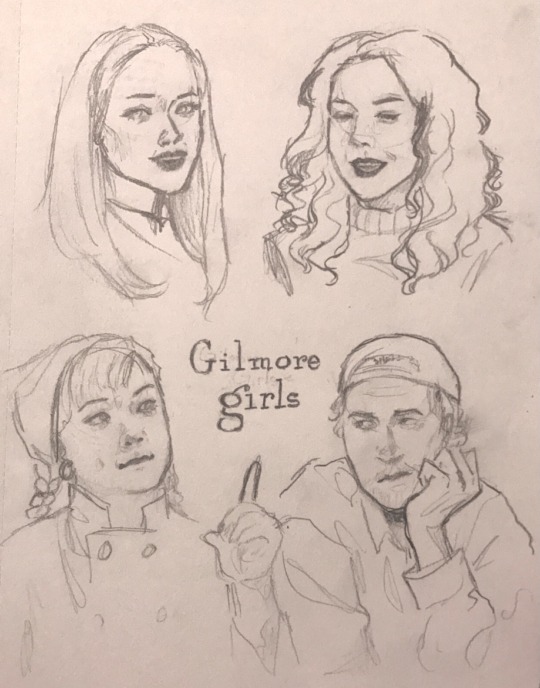
posted while sitting in sunday school. can’t handle all the season four slander
#artists on tumblr#art#my art#traditional art#traditional drawing#gilmore girls#rory gilmore#lorelai gilmore#luke danes#sookie st james#luke x lorelai#fan art#fanart
16 notes
·
View notes
Text
my friend got the dopest tattoo inspired by St Luke, was done on his feast day too. sick to see actually well done and artistic religious tattoos. his piece makes me super jealous
#not sharing pics out of respect of privacy but it's a religious quote from a 60s band with St Luke imagery. great stuff#i might end up going to his artist he sounded cool too#щ
3 notes
·
View notes
Text
women artists that you should know about!!
-Judith Leyster (Dutch, 1609-1660)
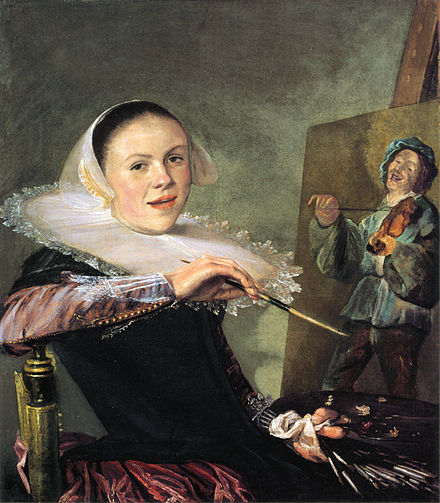
During her life her works were highly recognized, but she got forgotten after her death and rediscovered in the 19th century. In her paintings could be identified the acronym "JL", asually followed by a star, she was the first woman to be inserted in the Guild of St. Luke, the guild Haarlem's artists.
-Artemisia Gentileschi (Italian, 1593-1656)
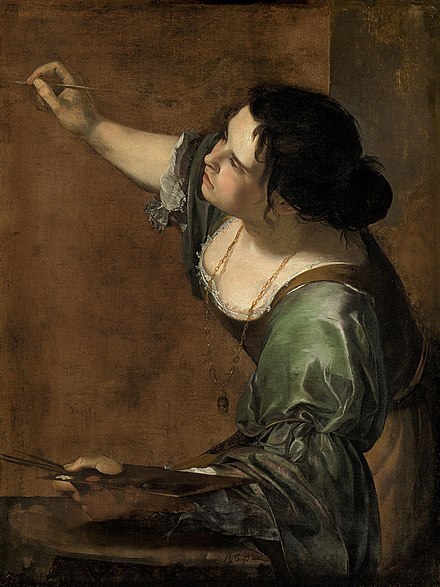
"... Si è talmente appraticata che posso osar de dire che hoggi non ci sia pare a lei, havendo fatto opere che forse i principali maestri di questa professione non arrivano al suo sapere". This is how the father Orazio talked about his nineteen year old daughter to the Medici's court in Florence.
In 1611, Artemisia got raped, and she had to Undergo a humiliating trial, just to marry so that she could "Restore one's reputation" , according to the morality of the time. Only after a few years Artemisia managed to regain her value, in Florence, in Rome, in Naples and even in England, her oldest surviving work is "Susanna and the elders".
-Elisabeth Louise Vigèe Le Brun (French, 1755-1842)
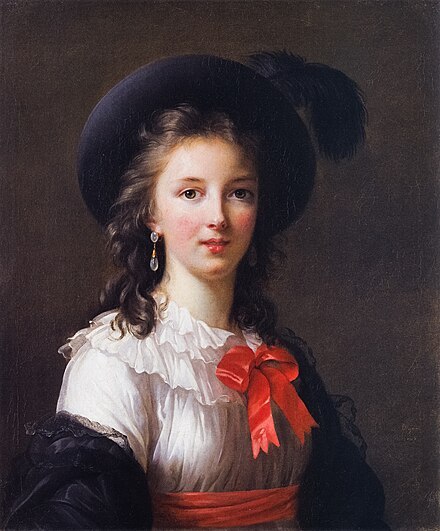
She was a potrait artists who created herself a name during the Ancien Règime, serving as the potrait painting of the Queen of France Marie Antoinette, she painted 600 portraits and 200 landscapes in the course of her life.
-Augusta Savage (Afro-American, 1892-1962)
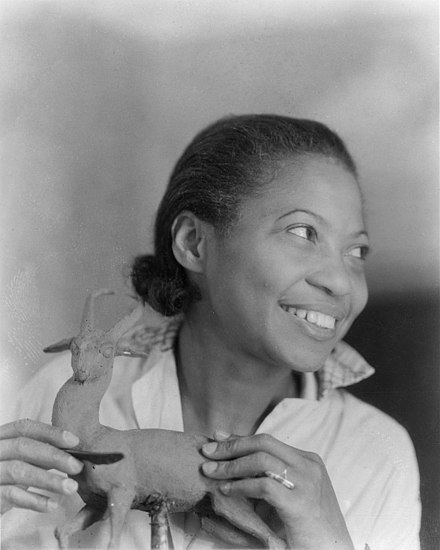
Augusta started making figures when she was a child, which most of them were small animals made out of red clay of her hometown, she kept model claying, and during 1919, at the Palm Beach County Fair, she won $25 prize and ribbon for most original exhibit. After completing her studies, Savage worked in Manhattan steam laundries to support her family along with herself. After a violent stalking made by Joe Gould that lasted for two decades, the stalker died in 1957 after getting lobotomized. In 2004, a public high school, Augusta Fells Savage Institute of Visual Arts, in Baltimore, opened.
-Marie Ellenrieder (German,1791-1863)
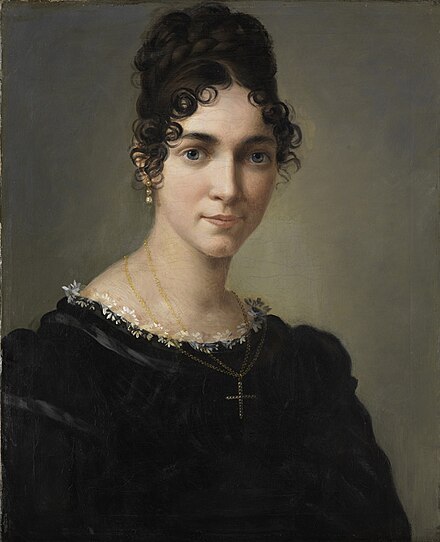
She was known for her portraits and religious paintings. During a two years long stay in Rome, she met some Nazarenes (group of early 19th century German romantic painters who wanted to revive spirituality in art),after becoming a student of Friedrich Overbeck and after being heavily influenced by a friend, she began painting religious image, getting heavily inspired by the Italian renaissance, more specifically by the artist Raphael. In 1829, she became a court painter to Grand Duchess Sophie of Baden.
-Berthe Marie Pauline Morisot (French,1841-1893)
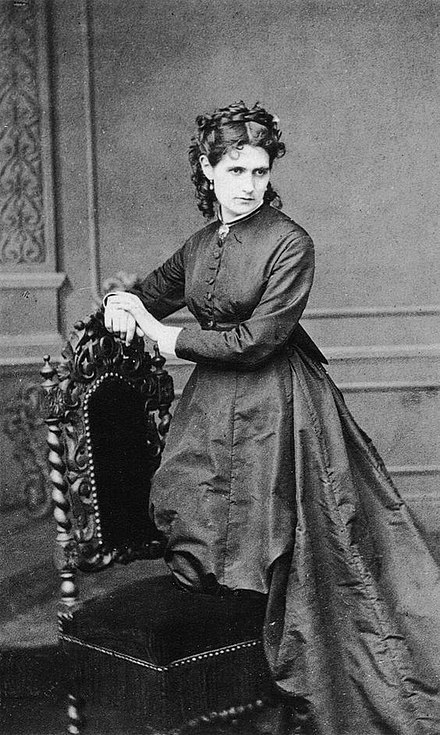
Morisot studied at the Louvre, where she met Edouard Manet, which became her friend and professor. During 1874 she participated at her first Impressionist exhibition, and in 1892 sets up her own solo exhibition.
-Edmonia Lewis or also called "wildfire" (mixed African-American and Native American 1844-1907)
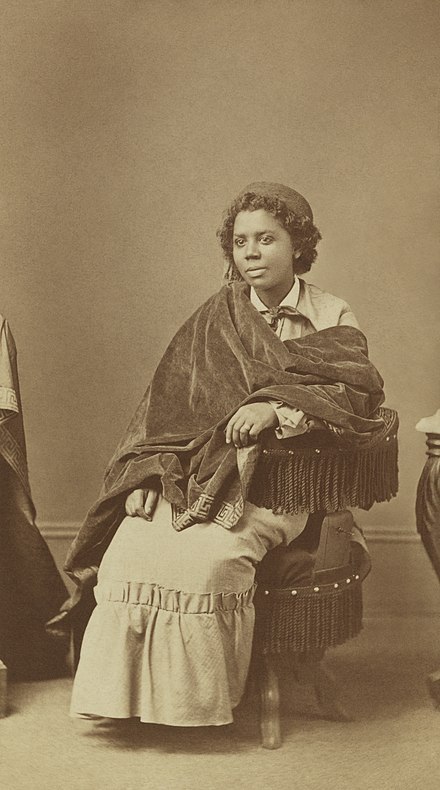
Edmonia was born in Upstate New York but she worked for most of her career in Rome, Italy. She was the first ever African American and Native American sculptor to achieve national and international fame, she began to gain prominence in the USA during the Civil Ware. She was the first black woman artist who has participated and has been recognized to any extent by the American artistic mainstream. She Also in on Molefi Kete Asante's list of 100 Greatest African Americans.
-Marie Gulliemine Benoist (French, 1768-1826)
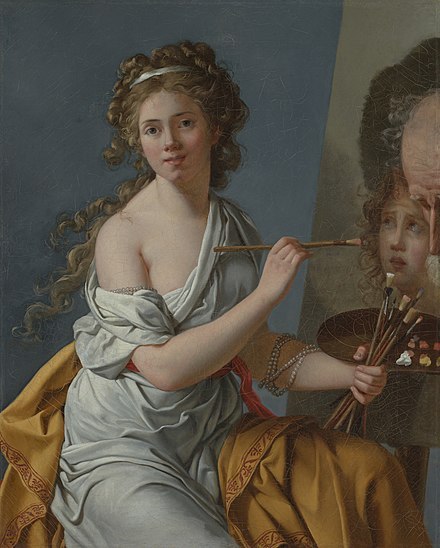
Daughter of a civil servant, Marie was A pupil of Jaques-Louis David, whose she shared the revolutionary ideas with, painting innovative works that have caused whose revolutionary ideals he shared, painting innovative works that caused discussion. She opened a school for young girl artists, but the marriage with the banker Benoist and the political career Of the husband had slowly had effect on her artistic career, forcing her to stop painting. Her most famous work is Potrait of Madeline, which six years before slavery was abolished, so that painting became a simbol for women's emancipation and black people's rights.
-Lavinia Fontana (Italian, 1552-1614)

She is remembered for being the first woman artist to paint an altarpiece and for painting the first female nude by a woman (Minerva in the act of dressing), commissioned by Scipione Borghese.
-Elisabetta Sirani. (Italian, 1698-1665)
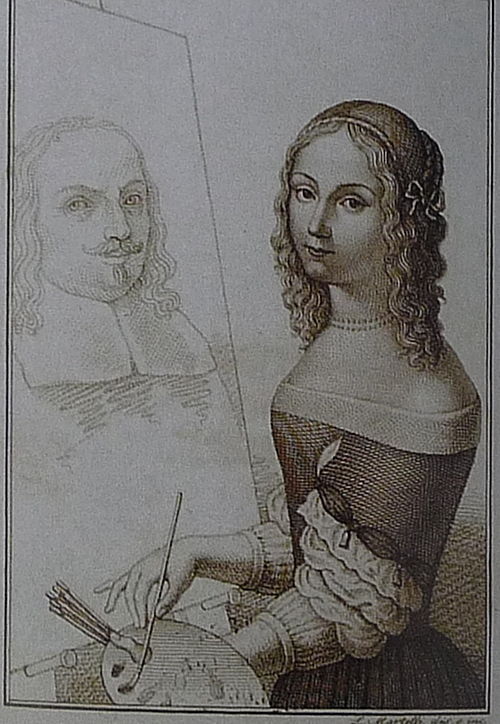
Her admirable artistic skills, that would vary from painting, drawing and engraving, permitted her, in 1660, to enter in the National Academy of S. Luca, making her work as s professor. After two years she replaced her father in his work of his Artistic workshop, turning it into an art schools for girls, becoming the first woman in Europe to have a girls' school of painting, like Artemisia Gentileschi, she represent female characters as strong and proud, mainly drawn from Greek and Roman stories. (ex. Timoclea Kills The Captain of Alexander the Great, 1659).
#judith leyster#artemisia gentileschi#Elisabeth Louise Vigèe Le Brun#Augusta Savage#Marie Ellenrieder#berthe morisot#Edmonia Lewis#Marie Gulliemine Benoist#Lavinia Fontana#Elisabetta Sirani#women artists#renaissance#baroque#art#women in art#artist women#feminism#women history#radical feminists do touch#radical feminists please interact#history#terfblr#terfsafe#cultura#culture
916 notes
·
View notes
Text

Byzantine icon of the Madonna (Theotokos) and Child, of the type known as Hodegetria (Our Lady of the Way): Mary gestures toward the infant Christ, who in turn raises his hand in a sign of blessing. The type originated in a now lost icon from the Monastery of the Panagia Hodegetria in Constantinople that was said to have been painted by St. Luke. This example, by an unknown artist, dates to the 14th century and is in the MUZA, Valletta, Malta.
#art#art history#Middle Ages#medieval#medieval art#Byzantine#Byzantine Empire#Byzantine art#icon#iconography#religious art#Christian art#Christianity#Orthodox Christianity#Eastern Orthodox#Madonna and Child#Theotokos#Hodegetria#14th century art#MUZA
175 notes
·
View notes
Text
The "Gethsemane" paintings: what they are and who created them
It's widely regarded as one of the most artistically effective -- and emotionally affecting -- sequences in the 1973 film of Jesus Christ Superstar. Nearly every reviewer has cited it (one calling it nothing less than a "masterly cinematic stroke of genius"), Wikipedia devotes the caption of an illustration to it, and I've seen more than one production (and one 50th-anniversary music video featuring the film's star, Ted Neeley) imitate it. (In fairness, it's not like anyone has come up with a better idea.)
Every draft of the screenplay uses the same language to describe it, and since I couldn't phrase it nearly so well, I will, too:
258 to 280. CRUCIFIXION MONTAGE.
On the heavy brass instrumental bridge, we cut to a rapid montage of about 23 shock cuts of full figure and details from the most powerful masterpieces, painted and sculpted, on the theme of The Crucifixion. Cut for impact of expression, nailed hand, wounds, thorns; for these 26 seconds we see how Christ was to die - both then and ever since. This is the agony of the cross.
It certainly is... especially those uncomfortably fast zooms and abrupt close-ups.
Some call it "foreshadowing," but I don't think that's a strong enough word. Truthfully, I find this series of famous paintings more brutal than the actual crucifixion scene in the movie. Compared to the visions Christ might be having about his death, the execution itself is in, out, and done so quickly that it's hard for me to feel any kind of way about it. But this sequence is a horse of a different color.
Anyway, one of the most asked questions about this montage has been, "What paintings were featured in this sequence, and who painted them?" In all honesty, I never cared who did it. I assumed they came from the Italian and Northern Renaissance eras, possibly with some Baroque mixed in. But I was never an art history major, and knowing the sources and their creators wouldn't have enriched my experience. I know it nailed me in the gut when I was a kid and has (somewhat) freaked me out ever since, and I thought that was all I needed to know.
However, it mattered to other people, so I did some digging. It was kind of tough, partly because many of the shots zeroed in on specific details rather than revealing the entire painting. But with a little help from the film's production file (courtesy of the Norman Jewison collection at the Wisconsin Historical Society Archives), and researchers Ethan Clark and José Garay, we've managed to identify 12 paintings by 10 artists in the final montage, as well as uncovering a few of them that didn't make the cut.
To learn about the paintings and take a closer look, hit the jump!
The Montage
Here, in order of appearance, are the paintings that made the cut, as well as the artists behind them, and how many times they show up:
Crucifixion of Christ (Derick Baegert) -- once
Isenheim Altarpiece (Matthias Grünewald) -- six times (thrice sequentially after Baegert, twice sequentially after the second Grünewald, and once after Bosch)
Crucifixion (Tintoretto) -- once (and incidentally, it's horizontally inverted)
The Crucifixion of Christ (Matthias Grünewald) -- twice (once after Tintoretto, once after the Austrian School)
Christ on the Cross (Diego Velázquez) -- once
Crucifixion (Masaccio) -- once
Crucifixion (Andrea del Castagno) -- once
The Trinity with Christ Crucified (Austrian School) -- once (the angel on the right-hand side, horizontally inverted)
Saint Luke Painting the Crucifixion (Francisco de Zurbarán) -- twice (once before Bosch, once before van der Weyden)
Christ Carrying the Cross (a follower of Hieronymus Bosch) -- twice (sequentially)
The Crucified Christ Between the Mourning Mary and St. John, a/k/a Crucifixion of Scheut or Escorial Crucifixion (Rogier van der Weyden) -- twice (sequentially)
Christ Crucified (Francisco Goya) -- thrice (sequentially)
Of the above list, ten of them were included in a memo dated June 8, 1973, concerning the contents of the montage that appears in the production file. (Grünewald's name appears only once, with no attribution, so it's unclear whether one or both paintings were initially intended for inclusion.)
The Leftovers
Only three classic paintings from the previously mentioned memo didn't make it into the film.
First on the list, which categorized the paintings alphabetically by artist's surname (or, in some cases, name), is "Antonello." This clearly refers to the crucifixion painted by Antonello da Messina, which incidentally was also source material for the production designs for Martin Scorsese's The Last Temptation of Christ. The only unclear thing is which one; Wikipedia lists three, all fairly similar-looking.
Second is an actual Hieronymus Bosch painting, Ecce Homo. Considering the Bosch-reminiscent image used in the final cut, I can only assume Jewison was either eying the crowd or confusing this painting with the more well-known descendant.
Last is an artist we have yet to identify. The memo lists them as "Guinewala," but Googling produces no artist by that name, and there is no helpful title to allow us to reverse-engineer who that actually is. (My assumption is that it's a phonetic spelling or a weird typo.) A friend who spends a lot of time at MOMA and the Brooklyn Museum of Art is wracking their brain. When they have an answer, we will!
Well... I'm glad I cleared that up for everyone. I hope this offers the art experts among us some insight into the construction of the scene. Maybe this will tell them something that we average folk don't know? Time will tell.
#jesus christ superstar#andrew lloyd webber#tim rice#jcs#jesus christ super star#jcss#jesus christ super-star#carl anderson#ted neeley#miscellaneous
20 notes
·
View notes
Text
Slytherin Quidditch Team jobs after Hogwarts
🔥Terence Higgs🔥
After graduation, he started working at the White Wywern as a bartender. He felt in the right place and his boss joked that they have never sold so many drinks before, because let's be real, who would say no to him? But it's obviously not a job for whole life. He was 26 when he changed his job and started working at Gringotts Wizarding Bank. He works in London, magical artifacts are sent to him and he's role is to discover their origin, history, and the way they work, as well as the function of the magic enchanted in them
⚡Marcus Flint⚡
Ha had offers from professional Quidditch teams but, surprisingly, didn't want to go professional. Being a professional player comes with many sacrifices and obligations. Marcus was afraid he would lose this pure happiness from playing due to the required lifestyle. Also, it's easy to get injured badly which can end one's career and affect the rest of the life. It wasn't an easy decision for him to make, he loves Quidditch and it was his dream for many years. He started working as a tattoo artist in a studio in Knockturn Alley. After the war, he started doing cover-up tattoos for the dark mark, using magical ink. Marcus was raised in a toxic pure-blood family but he has friends who helped him saw that bullshit and became a better person. However, he knows not everyone was so lucky and he understood what might lead them to the dark path. He was more than happy to help them to leave the past behind and become a better person
💀Cassius Warrington💀
Cass back in his Hogwarts years loved piercing and did his and his friends' ones. Obviously, they were completely unprofessional, done with a needle in the dormitory, but let's be real, we all were there. After Hogwarts, he started doing it seriously and professionally, in sterilized conditions, and started doing stick and poke tattoos. He bought the tattoo studio, the same one Flint worked at, so technically, he was Marcus' boss. Cass often calls him "captain" and Flint always answers with "boss". They remake the whole studio design. Flint specialized in tattoos and Warrington in piercing and small stick and poke designs
♦️Peregrine Derrick♦️
He worked his ass off during 7th year to persuade his dreams of becoming a healer at St Mungo's Hospital for Magical Maladies and Injuries. Man passed 6 N.E.W.T.s with the best grades to be able to do so. Learning about magical creatures was interesting, not easy but he actually liked that so studying wasn't that hard and tiring for him. Transmutation on the other hand... He was lucky Montague is a transmutation genius and helped him a lot. Considering his love for magical creatures, it's not a surprise he decided to specialize in treatment for creature-induced injuries. Working in St Mungo's allowed him to see extremely rare cases. Obviously, his main goal is always to help his patient but he can't help but be interested in those creatures and the incidents that happened. Man lost all his hope in humans, hearing the stories and reasoning behind their actions. Amount of people sure that this random creature classified as impossible to domesticate would love them and make them the exception in their killing spree is amazing
🌱Lucian Bole🌱
He decided what he wants to do in life during the holidays, before his 7th year. It required exams from muggle subjects he didn't know shit about (wowie, ending education in muggle subjects at the age of 11) so he started learning them during his 7th year and took a year off after Hogwarts. He passed exams and started studying at a muggle university to become a dietitian and personal trainer. Luke accommodated himself in the muggle world quite well, found muggle friends and girlfriend, and lived his best student life. After uni, Lucian started working with wizard sportsmen but mostly like, solo-athletes instead of Quidditch players or teams (why the fuck wizards don't have more sports, controversial opinion but Quidditch is bloody boring)
🌻Adrian Pucey🌻
Adrian despite his good grades, overall the best from the whole Team, he didn't want to sit by the desk for 8 hours in ministry. After graduating, he started working at Madam Malkin's. At first, he thought of it as a temporary job to do something while he would try to find the job of his dreams. But he found his place at Madam Malkin's. Adrian loved watching kids excited about starting Hogwarts, nervous wizards looking for good clothes for a date, fiancees looking for perfect outfits for their perfect day. He fell in love with being able to help them. Adrian changed Madam Malkin's a lot, making it a very size-inclusive, body-positive place (to Adrian, who struggled a lot with self-esteem and his body image, it was incredibly important). He even started a second-hand department in the shop with cheap, used and renewed clothes
🕸️Graham Montague🕸️
QUIDDITCH! He was the one and only to go professional. He was the youngest player at Hogwarts in their times to receive an offer – he was 15 when Falmouth Falcons contacted him. But he wanted to finish Hogwarts first and more teams reached out to him. Graham decided to sign a contract with Ballycastle Bats. At first, he was reserve obviously, but the first-team chaser got injured at the end of the season so he got to play. He did well and made an impression good enough to receive his chance as a first-team chaser next season. He played for them for four years. During 4th season he got injured badly and had to end his career. But his team didn't leave him and Montague became coach helper and after a few years, when the coach retired, he was promoted to main coach.
🌸Miles Bletchley🌸
After Hogwarts Miles started working at Madam Malkin's with Adrian to have a stable source of money. In his free time, he wrote articles for Daily Prophet, getting paid for articles, not hours. Miles started writing stories when he was twelve and found a passion, he wanted to base his life on. After some time, his essays gained popularity and respect among editors. Miles got a work offer for 8 hours daily, with hourly pay, and changed jobs. After the war, he was promoted to main editor and fought with tons of bullshit articles like LOOK WHAT HARRY POTTER WORE (in polish we say it's fighting the treadmills, like in Don Kichot, to fight a meaningless war that can't end with success, idk if there's an english idiom for that). His main goal, which was more likely to have a positive outcome, was to clearly sort news from gossips.
Not me making job headcanons because I'm looking for a summer job and it's the only thing I can think about
Btw I finished high school and my exams, now wait for the results (7th of July, two days before my bday, don't they dare ruined it). I was scared for my advanced polish exam (the "only" task is to write an essay which makes the topic really important u know, get a topic you don't know shit about and you're screwed). But topics (you have 2 to pick from) were awesome, almost everyone, including me, wrote "functions of mixing the realistic and fantastic conventions", the second one was also cool, sth about using elements from mythology and Bible in works from different centuries but it imposed the use of book that no one likes
Idk it got kinda long
#slytherin quidditch#harry potter#marcus flint#slytherin quidditch team#slytherins#slytherin#adrian pucey#terence higgs#cassius warrington#peregrine derrick#lucian bole#graham montague#miles bletchley
38 notes
·
View notes
Text

Gonzales Franciscus Casteels - The relief of the city of Esztergom in Hungary by Duke Charles of Lorraine and Elector Max Emanuel of Bavaria - 1686
oil on canvas, height: 169 cm (66.5 in); width: 244 cm (96 in)
Casteels is only known for two paintings depicting two historical battles from the Great Turkish War.
The second painting depicts The relief of the city of Esztergom (At Dorotheum Vienna auction of 4 October 2000, lot 177). The painting which is signed and dated 1686 depicts the battle against Turkish forces for the relief of Esztergom (called 'Gran' in German), now in Hungary, which took place in August 1685. The Christian troops were under the command of Charles V, Duke of Lorraine and the elector Maximilian II Emanuel, Elector of Bavaria. This picture like the first one offers a bird's eye view on several planes of the intense fighting between the Christian and Turkish forces.
Gonzales Franciscus Casteels (? – Antwerp, after 1709) was a Flemish painter. He worked in Antwerp and is known for two works depicting battle scenes.
Very little is known about the life of Casteels. His date and place of birth are not known. He was likely a member of the artist family Casteels which produced a large number of battle painters in the second half of the 17th century. He was admitted as a 'wijnmeester' ('wine master', meaning a son of a master) in the Antwerp Guild of St. Luke in the guild year 1659–1696. As he had already produced a signed work in 1686 it is likely that before becoming a master in the Guild he worked in the family workshop.
He married Clara Catharina Smout, the sister of the painters Lucas Smout the Younger and Dominicus Smout. Through this marriage he was also a brother in law of the painter Jacob Herreyns the Elder who had married his wife's sister. His wife operated an art and painting materials business which she had inherited from her parents. Her brother Lucas, who suffered from gout and was a bachelor, lived with the Casteels family. The couple had two sons called Franciscus en Carolus who likely also became painters as their uncle Dominicus Smout left them all his drawings, sketches and prints in his will made in 1742.
The artist and his wife made their wills on 14 January 1709. The wills mention that they were living on the Schoenmarkt in Antwerp. This is the last record on the artist.
15 notes
·
View notes
Text









Haven Gallery presents 'Serendipity', a group art exhibition curated by Beautiful Bizarre Magazine, showcasing over 80 of the world’s best two and three dimensional artists, each exploring the 'Serendipity' theme through their own unique styles, genres and mediums.
Selected art by Luke Hillstead, Miho Hirano, J Henry, Tom Bagshaw, Loles Romero, Howard Lyon, Hieu Nguyen (Kelogsloops), Orphné Achéron and Tamura Yoshiyasu.
The exhibition is on display until December 3 2023 at Haven Gallery, 50 Main St, Northport, NY 11768, open to the public for viewing, and on the Haven Gallery website.
#Art#Haven Gallery#Luke Hillstead#Miho Hirano#J Henry#Tom Bagshaw#Loles Romero#Howard Lyon#Hieu Nguyen#kelogsloops#Orphne Acheron#Tamura Yoshiyasu#Exhibition#Art Show#Gallery Show#New Contemporary Art#Pop Surrealism#Original Art#Imaginative Realism
18 notes
·
View notes
Text
AMfP Paintings Part 1
This is the first part of my file on the paintings and a couple of other images found in the game. I haven’t been able to identify all of them, since some are obscure (I’m looking at you, Mr Herring), but the majority are relatively well-known paintings. For the second part see here.
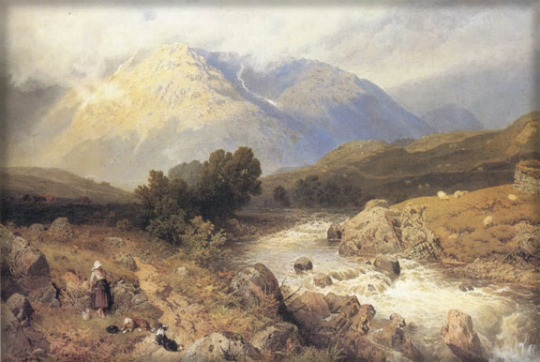
Title: Highland Scene near Dalmally
Artist: Myles Birket Foster
Year: c. 1885

Title: Spring Morning
Artist: William J. C. Bond
Year: 1863

Title: Dalton Collecting Marsh-Fire Gas
Artist: Ford Madox Brown
Year: 1887

Title: Applicants for Admission to a Casual Ward
Artist: Luke Fildes
Year: 1874

Title: A Special Pleader
Artist: Charles Burton Barber
Year: 1893

Title: The Blind Fiddler
Artist: David Wilkie
Year: 1806

Title: The Babylonian Marriage Market
Artist: Edwin Long
Year: 1875

Title: Farmyard Friends (Farmland Friends?)
Artist: John Frederick Herring Jr

Title: The Bean Feast
Artist: Jan Steen
Year: 1668
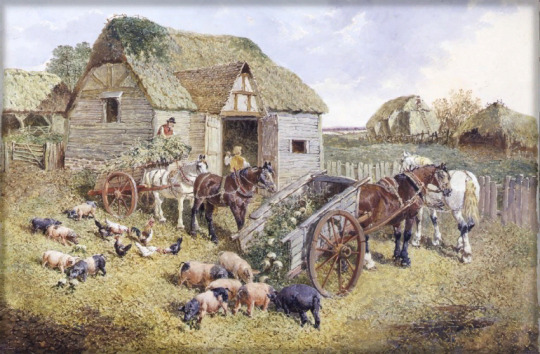
Title: The Turnip Cart
Artist: John Frederick Herring Jr
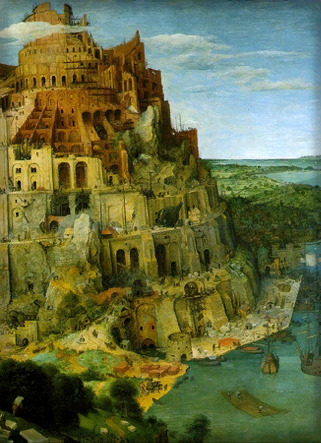
Title: The (Great) Tower of Babel
Artist: Pieter Bruegel
Year: 1563

Title: New, Old Pig on the Block
Artist: Ian Schoenherr
Year: 2012
About: a remake of Schoenherr's earlier picture ‘Young Pig Lincoln’, based on a photo of William Wallace Lincoln
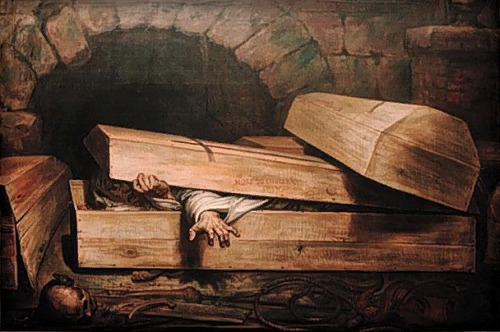
Title: The premature burial
Artist: Antoine Wiertz
Year: 1854

Title: The Death of Sardanapalus
Artist: Eugène Delacroix
Year: 1827

Title: Triptych of the Temptation of St. Anthony
Artist: Hieronymus Bosch
Year: c. 1501

Title: Hunger, Madness, Crime
Artist: Antoine Wiertz
Year: 1853
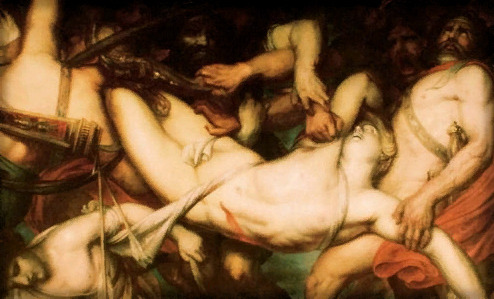
Title: The Greeks and the Trojans Fighting over the Body of Patroclus (Ver I)
Artist: Antoine Wiertz
Year: 1836

Title: The Greeks and the Trojans Fighting over the Body of Patroclus (Ver II)
Artist: Antoine Wiertz
Year: 1836
#amnesia a machine for pigs#paintings#art#amnesia#a machine for pigs#aamfp#amfp#the chinese room#frictional games
26 notes
·
View notes
Text
Jatp/10 Things I Hate About You AU
In honor of the third anniversary of the premier of Julie and the Phantoms here is the 10 Things I Hate about You AU I will never write.
I’m not going to explain a whole lot about 10 Things. If you’ve seen the movie this should make sense, If not I highly recommend.
Luke is Patrick – With his sleeveless tees and his doesn’t give a crap about school attitude. Think more brooding musician Luke, less excited puppy. He gets sent to the office all the time for skipping class to write music.
“You’re not afraid of me are you?”
Julie is Kat – Angry at the world. Her mother died three years ago and she’s moved on from grief to anger. The only scene I have an idea about is changing the dancing drunk on a table scene to singing karaoke drunk on a table. Cause I’d still want her to hit her head and have Luke catch her and take her outside and worry she’s got a concussion.
That whole scene on the swing set, need it.
“Why are you doing this?”
“I told you you may have a concussion.”
“You don’t care if I never wake up.”
“Sure I do.”
“Why?”
“Because then I’d have to start taking out girls that actually like me.”
“Like you could find one.”
“Oh, See, that, there. Who needs affection when I have blind hatred.”
“Ugh, just let me sit.”
“So why’d you let him get to you?”
“Who?”
“Bobby?”
“I hate him.”
“Well you’ve chosen the perfect revenge, mainlining tequila.”
“Well you know what they say?”
“Nope, what do they say?”
Julie passes out.
“No, no, no, no, Julie wake up look at me! Listen to me Julie open your eyes!”
Julie opens her eyes to see Luke hovering over her.
“Hey, what color even are you eyes? Every time I look at you they’re different.”
He smiles at her.
She throws up.
Reggie is Cameron – New kid in school. Completely smitten by Flynn the first time he sees her just like Cameron is with Bianca.
“I burn, I pine, I parish…”
Alex is Michael – He’s a band geek instead of future MBA (Masters Business Administration) like Michael was. He knows all the gossip about everyone. He’s the one showing Reggie around campus when Reggie sees Flynn for the first time. He could also be the one that sets up the apology song (Can’t keep my eyes off of you) for Luke to sing to Julie with the band chiming in.
Flynn is Bianca – Kat’s/ Julie’s sister. I’m going to go with Flynn being adopted a couple years after Julie was born.
“Can you for one night forget that you are completely retched and be my sister… please.”
So they wouldn’t be the same age like in jatp but a couple years apart like in 10 things. So everyone but Flynn and Carrie are seniors.
Willie is Mandella – Kat’s best friend who Alex has a crush on. No weird Shakespeare thing needed. Maybe Alex just leaves a regular old note in their locker asking them to prom? Maybe it’s not a “regular” note but one on the back of a postcard of a famous painting by Willie’s favorite artist.
Carrie is Chastity – Flynn’s best friend.
“I know you can be overwhelmed and you can be underwhelmed but can you ever just be whelmed?”
“I think you can in Europe.”
Bobby is Joey – It’s definitely believable that that character could be an idiot jackass and I think I can believe he’s a model if he was prepped up some (less grunge more styled). The only weird would be that he’d end up taking Carrie to the prom and most of us write them as related. I was thinking they don’t HAVE to be related but then again maybe it’d be even funnier if they were cousins and she was his only option after Flynn ditched him for Reggie.
Bobby punches Reggie.
Flynn punches Bobby.
“Shit Flynn! I’m shooting a nose spray add tomorrow!”
“That’s for making my date bleed!”
Punches him again.
“That’s for my sister!”
Knees him in the groin.
“And that’s for me!”
She helps Reggie up off the floor.
“Are you ok?”
He smiles, “Never been better.”
KISSES!
Nick is Bogey Lowenstein – Rich band nerd not cool jock. It works well enough.
“You guys please, take it outside!” Fighting boys crash through the window. “Thank you!”
Ray is Mr. Stratford – Kat and Flynn’s dad. I know on jatp he’d a photographer but he’d just have to be a gynecologist in this because all his panic about the girls dating is way too funny to skip and with the pregnancy belly he makes Bianca put on at one point.
“I know who you want to bend the rules for it’s that hotrod Bobby.”
Caleb is Ms. Perky –The principle. Who doesn’t want to see Caleb spending time writing a romance novel instead of disciplining the children? I can just see him trying to think of new words for “throbbing member” and Luke or Julie giving him an answer he’s pleased with.
“The point is Julie. People perceive you as somewhat…”
“Tempestuous”
“Heinous bitch is the term used most often.”
Julie grins.
“You might want to work on that… Thank you.”
“As always thank you for your excellent guidance Mr. Covington. I’ll let you get back to Christopher’s quivering member.”
“Quivering member, hum, I like that.”
Mrs. Harrison is Mr. Morgan - The English teacher, no stretch here.
Carlos and Victoria could still be there just in much more minor rolls. They would be pretty much how they are on jatp.
#jatp#julie and the phantoms#10 things i hate about you#jatp/10 things au#never gonna write it but it would be so funny#happy anniversary jatp#jatp three year anniversary#they would have been legendary
13 notes
·
View notes
Photo

Happy Feast Day
Saint Luke the Evangelist
Died: 85
Feast day: October 18
Patronage: artists, bachelors, bookbinders, brewers, butchers, doctors, glassworkers, goldsmiths, notaries
Saint Luke, an early convert of paganism to Christianity was a physician who was born in Antioch, Syria. Luke was a close companion of St. Paul, whom he accompanied in prison on two different occasions. St. Luke is the writer of the third Gospel and of the Acts of the Apostles, his account of events is firsthand history.
{website}
68 notes
·
View notes
Text
SAINT OF THE DAY (October 18)
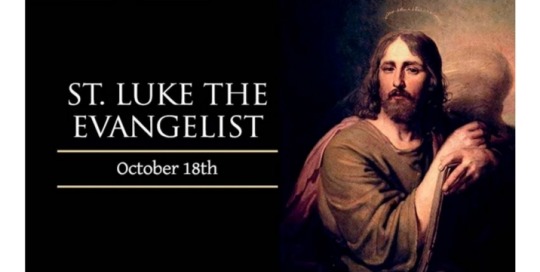
On October 18, Catholics and other Christians around the world will celebrate the feast of St. Luke, the physician and companion of St. Paul whose gospel preserved the most extensive biography of Jesus Christ.
St. Luke wrote a greater volume of the New Testament than any other single author, including the earliest history of the Church.
Ancient traditions also acknowledge Luke as the founder of Christian iconography, making him a patron of artists, as well as doctors and other medical caregivers.
Luke came from the large metropolitan city of Antioch, a part of modern-day Turkey.
In Luke's lifetime, his native city emerged as an important center of early Christianity.
During the future saint's early years, the city's port had already become a cultural center, renowned for arts and sciences.
Historians do not know whether Luke came to Christianity from Judaism or paganism, although there are strong suggestions that Luke was a gentile convert.
Educated as a physician in the Greek-speaking city, Luke was among the most cultured and cosmopolitan members of the early Church.
Scholars of archeology and ancient literature have ranked him among the top historians of his time period, besides noting the outstanding Greek prose style and technical accuracy of his accounts of Christ's life and the apostles' missionary journeys.
Other students of biblical history adduce from Luke's writings that he was the only evangelist to incorporate the personal testimony of the Blessed Virgin Mary, whose role in Christ's life emerges most clearly in his gospel.
Tradition credits him with painting several icons of Christ's mother, and one of the sacred portraits ascribed to him — known by the title “Salvation of the Roman People” — survives to this day in the Basilica of St. Mary Major.
Some traditions hold that Luke became a direct disciple of Jesus before his ascension, while others hold that he became a believer only afterward.
After St. Paul's conversion, Luke accompanied him as his personal physician and, in effect, as a kind of biographer, since the journeys of Paul on which Luke accompanied him occupy a large portion of the Acts of the Apostles.
Luke probably wrote this text, the final narrative portion of the New Testament, in the city of Rome where the account ends.
Luke was also among the only companions of Paul who did not abandon him during his final imprisonment and death in Rome.
After the martyrdom of St. Paul in the year 67, St. Luke is said to have preached elsewhere throughout the Mediterranean and possibly died as a martyr. However, even tradition is unclear on this point.
Fittingly, the evangelist whose travels and erudition could have filled volumes wrote just enough to proclaim the gospel and apostolic preaching to the world.
Patronage: artists, bachelors, bookbinders, brewers, butchers, doctors, glass makers, glassworkers, gold workers, goldsmiths, lacemakers, lace workers, notaries, painters, physicians, sculptors, stained glass workers, surgeons.
10 notes
·
View notes
Note
As an artist, if you were to make a Vodou rendition of the Last Supper, which lwas would you depict? And on a related note, is there already a correspondence between specific lwas, Jesus (or is he already Bondye?), the 12 disciples, and Judas Iscariot (perhaps as Linglessou)? For instance, while St. James the Great and St. James the Less are Ogous, St. Peter is a Legba/Sobo, St. Jude is a Legba/Simbi, etc., what lwa correspondences do others like Luke and Mark have? Would St. Philip make a great Gede as a patron of hatters and chefs?
I don't know that I would make that rendition!
How and why saints are present with lwa is one part mystery and one part history, in that it is largely something specific to lineage, locality, or specific lakou so it's less about selecting images to use and more about embracing what is transmitted to you by your lineage elders.
Various images of Christ are given to Bossou and Linglessou/Kriminel, among others.
Part of the mystery is that not all saints are present and we don't get to decide who is/is not present. There are Reasons and reasons that get revealed over time as we progress with our lwa.
Hope this helps!
3 notes
·
View notes
Text
An anarchy in architectural analysis
My second collection of university writings is a three-part 'portfolio' of certain Oxford University buildings and their architectural features, functions and contexts. Each part of the portfolio is a short response to a different prompt, supported by photos and illustrations by your dear artist herself.
The chapel at New College and the converted-church library of St Peter-in-the-East are drastically different spaces, from different points in history.
The east window of St Peter-in-the-East is in the Perpendicular Gothic style, typical of medieval church windows, and the image itself is a typically intricate late-medieval design. It features the four evangelists (Matthew, Luke, Mark and John) with their respective attributes of the winged beasts of Revelation (man, calf, lion and eagle) in a vibrant colour palette of red, blue, green, purple and gold.
The Great West Window of New College chapel, on the other hand, has a very similar style of tracery, possibly 15thcentury, but a different glass design. The design was created by Sir Joshua Reynolds in the 18th century – an elaborately painted set of allegorical figures representing the Seven Cardinal Virtues. These seven striking women are portrayed in such pale colours with accents of gold and orange that, when compared to the east window of St Peter-in-the-East, contrasts radically against the older, fully saturated, typical medieval style. However, if we look around the New College antechapel, we will see that the colour palette for this newer Georgian glass is designed particularly to fit in this room, alongside the grisaille and red glass on the south side and the muted colours on the north. These medieval windows depict the multitudes of saints that we would expect from pre-Reformation Catholicism.
What is interesting, but not particularly obvious, is the difference in leading in the Great West Window compared to the typical medieval stained glass found in the rest of the antechapel as well as on the east window of St Peter-in-the-East. As illustrated in Figure 1, the leading in St Peter-in-the-East’s east window is prolific and detailed, separating and supporting many colours of glass, as well as painted glass pieces. It adds a contoured effect to the design, but by breaking up the image, also blocks some, albeit not much, light. In the Great West Window, however, as seen in Figure 2, the leading is significantly reduced. This will, inevitably, reduce the strength of the window as a whole, but allows the window to let in the maximum light possible, and highlights the intricately painted details. Only the three centre figures (Faith, Love and Hope, significantly, the three traditional theological virtues) merit any outline, but even this is minimal and serves only to accentuate the forms slightly.
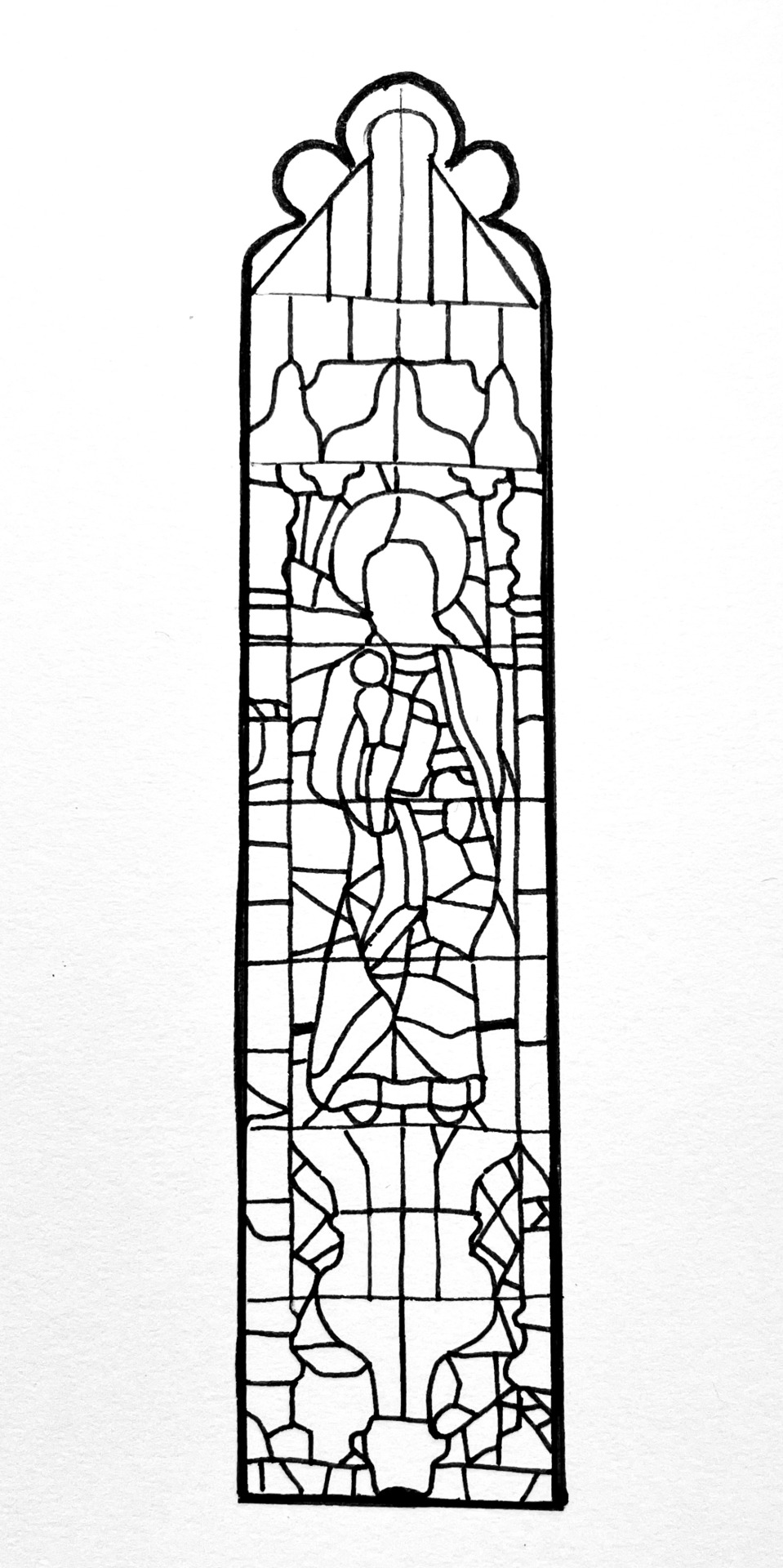



Figure 1 Illustration of leading on one light, featuring St Luke, east window, St Peter-in-the-East
Figure 2 Illustration of leading on lower lights, featuring the Seven Cardinal Virtues, west window, New College chapel
While the east end of St Peter-in-the-East is not unusual, with its detailed stained glass window, the east end of New College chapel abuts the tower and thus cannot have a window as is the custom. Instead, it features one of the grandest reredos in Oxford (Fig. 3). Housing multitudes of saints and prophets, these statues were restored in the Gothic Revival, after the Oxford Movement brought interest back to icons in the 19th century. They had been covered in plaster, presumably at the time of the Puritan movement when prayers to the saints and graven images were shunned.
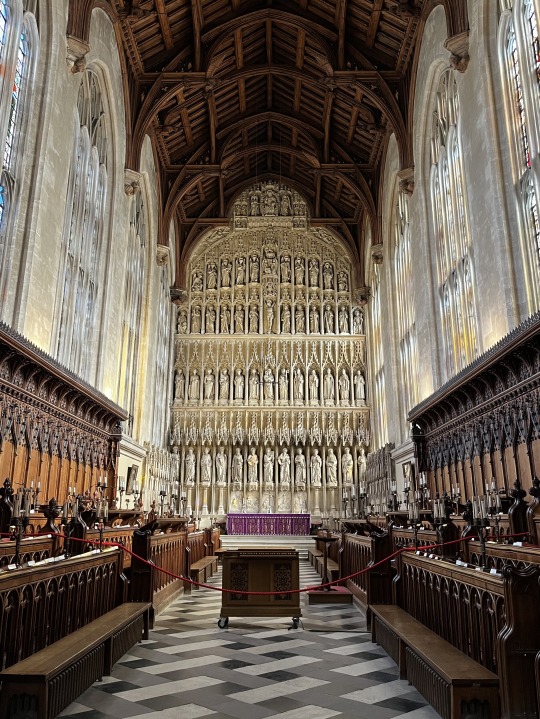
Figure 3 New College chapel reredos
———————————————————————
Christ Church boasts the largest quadrangle of all Oxford colleges, affectionately dubbed the ‘Tom Quad’, previously the ‘Great Quad’. The first thing that strikes you as you step into the quad from the south-east corner is the great late-Gothic styled Tom Tower, overlooking the space with a fair amount of character. It stands unique among the towers of Oxford – an ogee ‘onion’ dome, surrounded by finials, sitting atop a sturdy, eight-sided lantern. The grand west gate, situated under a large Perpendicular window, swallows up whoever stands beneath its four-centred arch (Fig. 1). The whole quad is lined with crenelation above, providing a fortified effect.
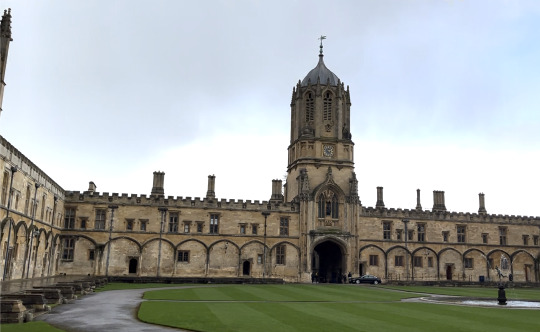
Figure 1 Tom Tower, overlooking Tom Quad, Mercury fountain in the foreground
The apparent blind arcade that encircles the whole quad is an unfortunate relic of the unexecuted Tudor-arched cloister that had been planned to shelter fellows on their way and enhance the grandeur and spectacle of the whole college. The flat-topped windows that peek through that arcade on the ground floor, perhaps because of that unfinished plan, are unevenly set, which provides a curious effect when noticed. They are simple and unadorned, serving only for light to the accommodation for fellows and company.
The dining hall sits to the south of the quad, its grand Tudor windows and high ceiling supported by narrow buttresses, and the string course bejewelled with grotesques and floral stonework. The elegant, decorative finials atop the buttresses are crocketed and panelled and serve only an visual and aesthetic purpose – to elongate the form of the hall and provide further illusion of height. The Great Staircase in the south-east (Fig. 4) has a beautiful elaborate fan-vaulted ceiling (Fig. 2) with swirling circular patterns that draw you up, inevitably adding to the grandeur of the quad, even if not visible from the outside.
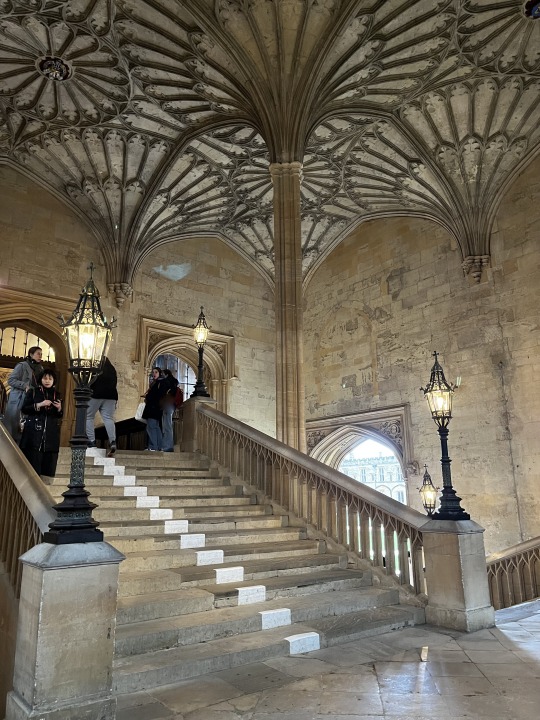
Figure 2 The Great Staircase
Three statues sit in elaborate niches above the entrance to the dining hall, two angels bearing heraldic symbols either side of Cardinal Wolsey, the founder of Cardinal college, the predecessor to Christ Church. (Fig. 3)

Figure 3 Statue of Cardinal Wolsey in Tom Quad
The Mercury fountain in the centre of the quad elevates the space as a water feature and seats a statue of its titular fleet-footed messenger god of Roman mythology, a figure representing communication, commerce and luck for the inhabitants of the college. (Fig. 1)
The two truncated bastions on the north and south-west corners of the quad (Fig. 4) and the bottom half of Tom Tower are more remains of the previous plans of Wolsey before his grand vision came to a halt. While Sir Christopher Wren finished the west entrance tower, the corners were never completed to the standard of Oxford towers that had been imagined.
The deanery sits elevated above the north-east corner, featuring the statue of John Fell, Dean from 1660 – appropriately, the students walking the corridor beneath the deanery would be watched closely by the Dean himself.

Figure 4 Plan of Christ Church, RCHM Inventory of the Historical Monuments of Oxford
———————————————————————
R. C. Whiting says in his introduction that ‘the rural aesthetic was firmly grasped by those interested in Oxford’s preservation’, highlighting the obvious prominent presence of swaths of green space within the city, that have successfully remained after so many centuries. He specifically mentions the ‘rural motifs’ of the Magdalen rose garden and Christ Church meadow, as well as the recurrent use of Cotswold stone around the city. An example of one of these such structures is the dubiously designed Nuffield College that was looked at on our Oxford walk. These college buildings are inspired by the idea of the Cotswold cottage, featuring flat façades and large chimney stacks on highly slanted roofs. These roofs mean expansive attic spaces that are made full use of with their dormer windows with lead glazing, all distinctive of that Cotswold architectural pattern. See the attached images comparing the interior façade of Nuffield’s Lower Quad with a typical Cotswold cottage in Coln St. Adwyns. Nuffield essentially scales up this cottage design to fit in with their Oxford college context, perhaps attempting to transfer the domestic feeling of village life to their college accommodation. They use the same sorts of natural materials, like Cotswold stone, and through that, provide an appearance of traditional craftsmanship that was repopularised during the Arts and Crafts movement. All these aspects of the design of Nuffield College indicate Whiting’s idea that new architects as well as those seeking to preserve Oxford focus on the promotion of natural and rural motifs.
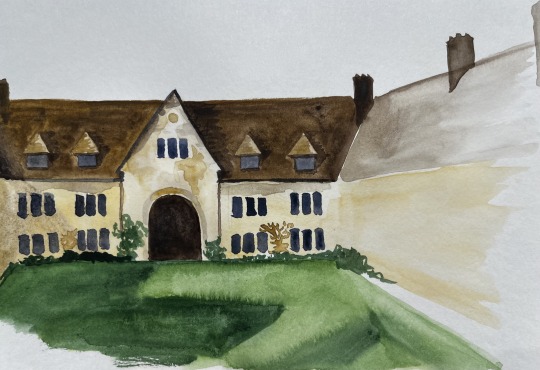
Figure 1 Nuffield College Lower Quad
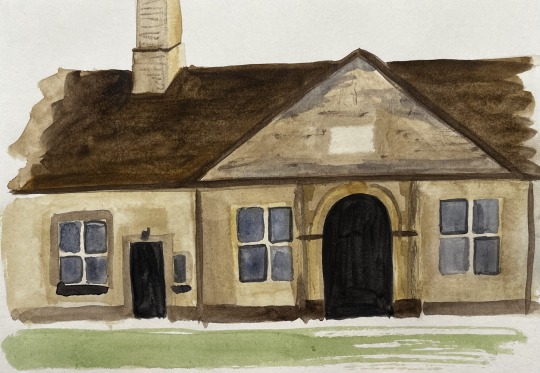
Figure 2 Typical Cotswold cottage
Many of Oxford’s Saxon and medieval buildings have repeated natural motifs distinctly or subtly included in their external designs, in the forms of capitals, ‘head stops’, and grotesques, among others. Carfax tower is an example of such, these floral images lining the string course below the entablature – some being hints of stone foliage, while the Green Man looks protectively down over the town square (Fig. 3). While the tower used to be part of the church of St Martin, the Green Man is a fascinating cultural remnant of Celtic paganism that has been carried down through the centuries, preserved in religious and secular architecture. Its symbolism seems appropriate for Oxford, being rebirth and new growth, as the past is preserved and rediscovered time and again.
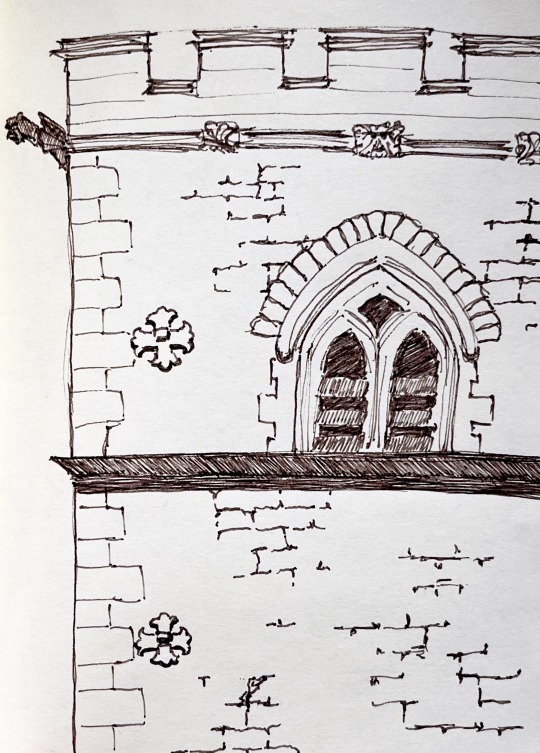
Figure 3 Carfax tower
Green spaces are extremely prevalent in the layout of Oxford, particular around and among the colleges, as they all have quadrangles, some of which are maintained with lawns, and many colleges also have well-established gardens. The Fellow’s Garden, hidden behind Christ Church Cathedral is one such space, elegantly maintained and preserved, in part, through its exclusivity. It assists to bring a sense of the country garden into the bustling centre of this very busy city.
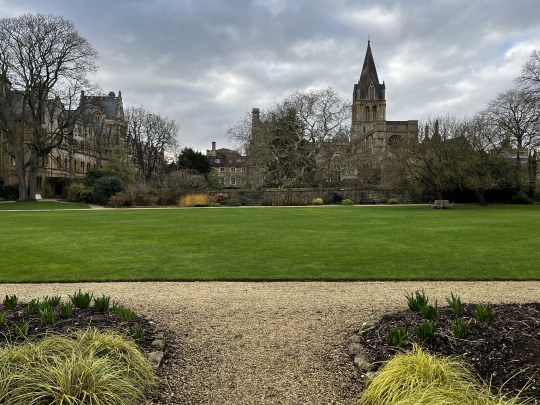
Figure 4 Fellow's Garden
2 notes
·
View notes